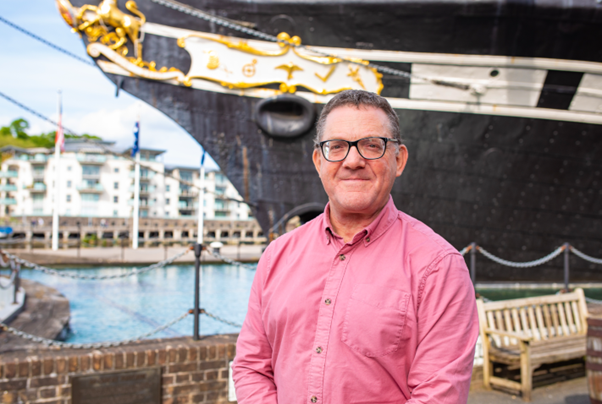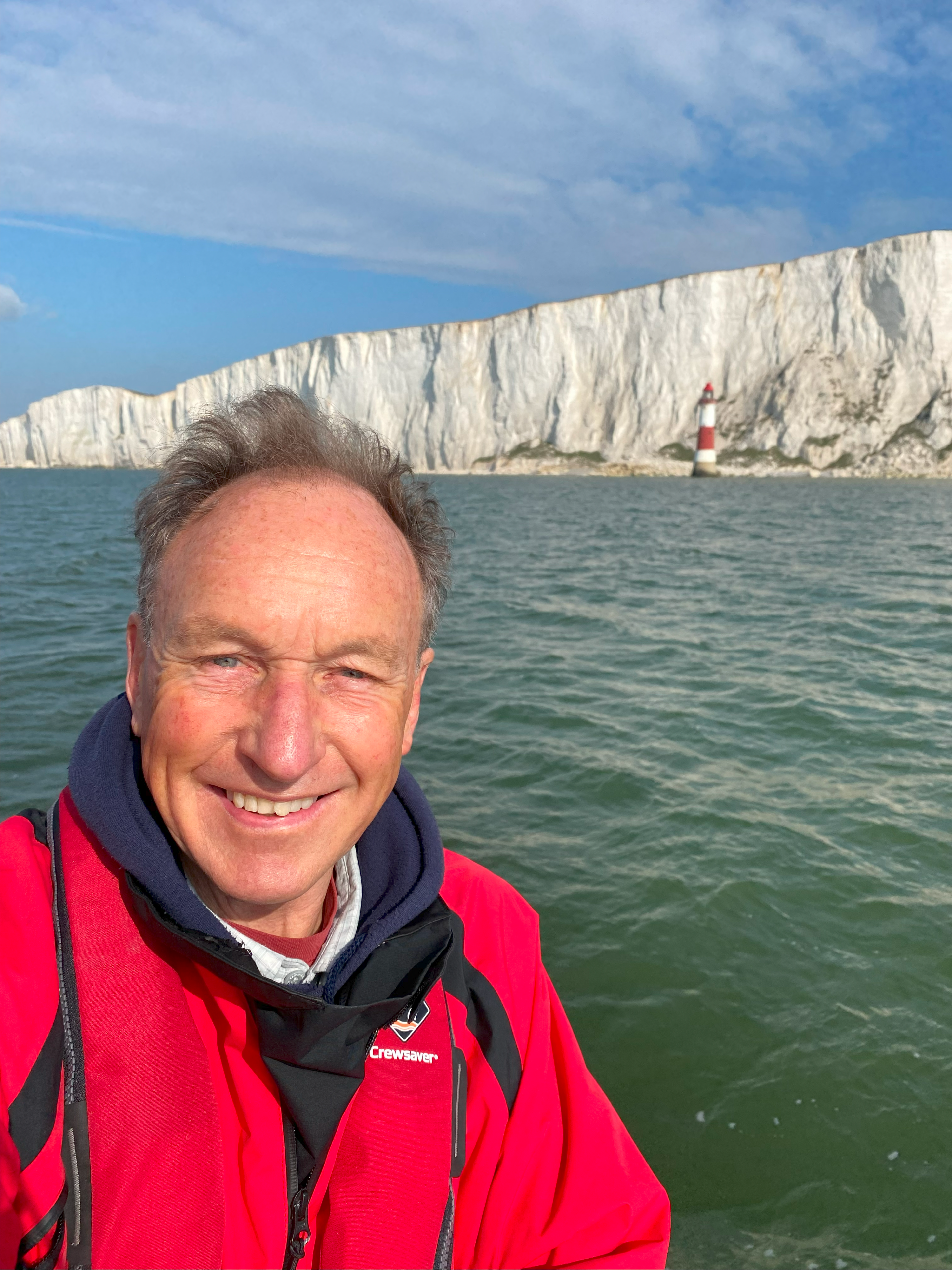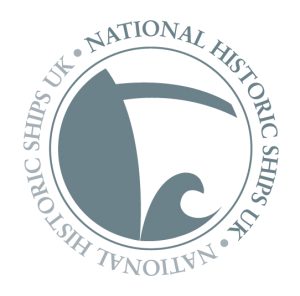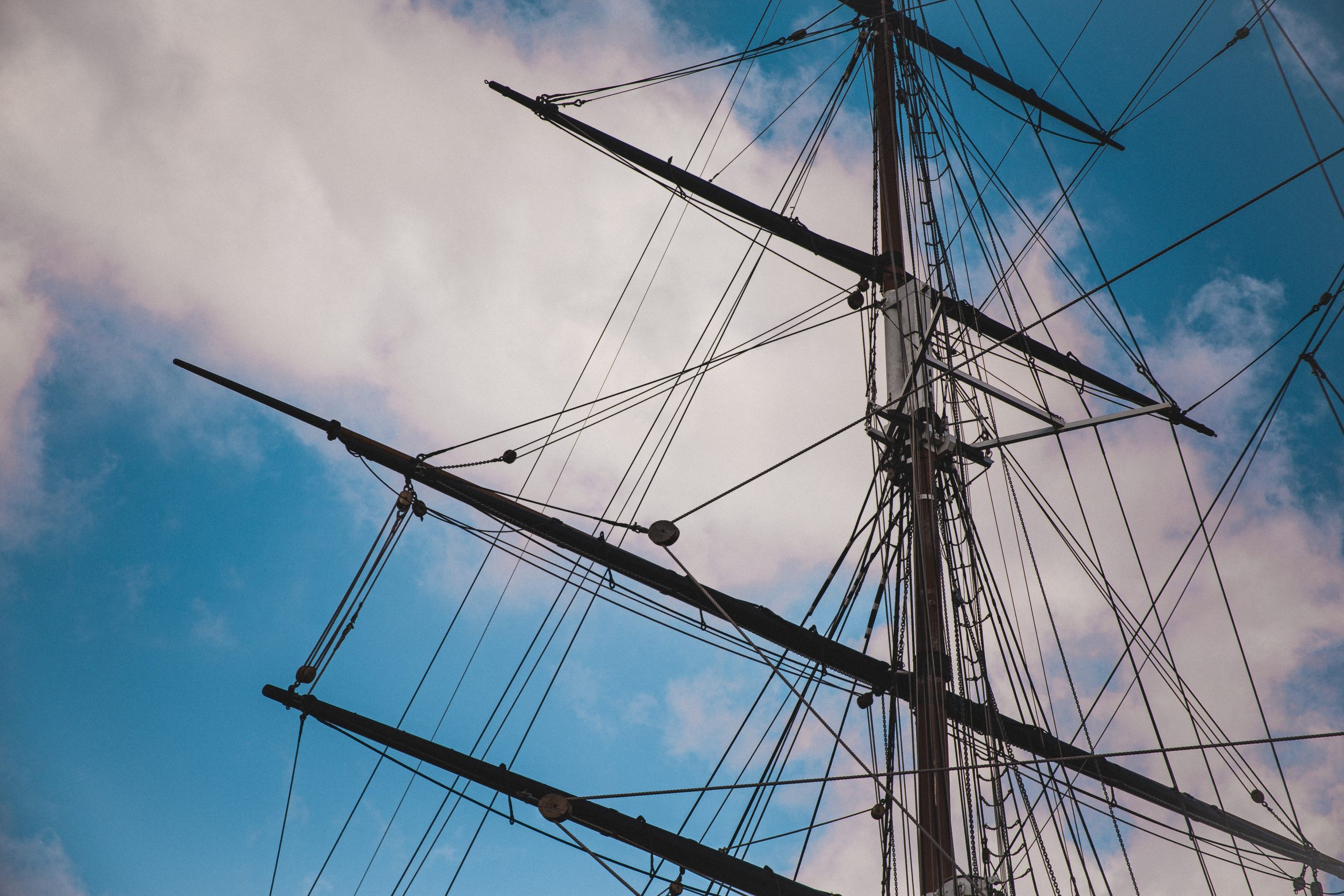Historic Ships 2023
In Partnership With:
Historic Vessels – Sustainable Futures
In partnership with Royal Museums Greenwich and National Historic Ships UK (NHS-UK), and supported by the Museum Ships Committee of the International Congress of Maritime Museums the successful Historic Ships conference returns for the eighth instalment. The Royal Institution of Naval Architects is not only proud of the current achievements in the marine industry but also our maritime heritage. The history of the world is the history of the sea, that through trade and war shaped our modern existence.
This conference will not only focus on the conservation of historic vessels but also the research and investigation into the engineering and proficiency of historic designs through modern naval architecture techniques. With this event, you will help to record the skills and techniques used to construct and operate our historic ships for current and future generations.
The conference will be held on 28-29 November 2023, followed by a visit to the Chatham Dockyard on 30 November 2023.
The visit to the Chatham Dockyard has a very limited ticket availability and the tickets are given out on a first come, first served basis – please book as soon as possible to avoid disappointment.
Registration Fees*
| Before 19th September 2023 | From 19th September 2023 | |
|---|---|---|
| RINA Member | £150+VAT | £200+VAT |
| RINA Non-Member | £200+VAT | £250+VAT |
| Concession
(retired/students etc.) |
£125+VAT | £125+VAT |
| Authors | £100+VAT | £100+VAT |
| Additional Authors | £150+VAT | £150+VAT |
* The Registration includes the travel to the Chatham Dockyard on 30th November 2023.
View Preliminary ProgrammeSpeakers

Dr Matthew Tanner MBE, Partner, Ttandem Consulting LLP; CEO, ss Great Britain Trust, 2000-23 and ICMM President, 2019-23
Ship Preservation – Still on the Road to Hell?
Matthew has worked in the heritage sector for some 25 years, specialising in maritime and industrial museums, and heritage visitor attractions.
He was appointed as Director & Chief Executive of the SS Great Britain Trust in 2000. The great iron ship project was awarded the Gulbenkian UK Museum of the Year Prize 2006, the England Large Visitor Attraction of the Year 2007, and the European Museum of the Year’s Micheletti Award for Best Industrial/Technology Museum.
In 2010 Matthew led the project to create the new Brunel Institute learning and archive centre in Bristol, incorporating the National Brunel Archive. In 2018 the new Being Brunel Museum opened on site and has been awarded the UK Best Exhibition prize. Shortly after the SS Great Britain was awarded the European Museum of the Year’s Portimao Prize for the most Welcoming Museum in Europe, and in 2023 became the Sustainable Project of the Year for its innovative work in significantly reducing the carbon footprint of its conservation systems.
He was elected in 2019 as the President of the International Congress of Maritime Museums, and he is a member of the HMS Victory board and the Chairman of the HMS Victory Technical Committee. In 2019 he was awarded the HMS Victory Medal by the Society of Nautical Research. He is an Honorary Vice President of the Association of Independent Museums, and of the Underfall Boatyard Trust, and he is a member of the Canal & River Trust Museum Advisory Board. He is a Non-Executive Director of Visit West, and of Business West – the Bristol, Bath and Swindon Chamber of Commerce and Initiative, and he has advised on many other cultural heritage and museum projects.
He was made an MBE in 2007 for services to maritime conservation, and he was awarded the Honorary Degree of Doctor of Laws from the University of Bristol in July 2015 in recognition of his work to turn the SS Great Britain into one of the region’s finest landmarks.

Roy Clare CBE DL Hon DLitt
Roy Clare has been a seafarer all his life. He joined the Royal Navy at HMS Ganges as a Junior Seaman 2nd Class and took early retirement three decades later as a Rear Admiral. Along the way he participated in the first Whitbread Round the World Yacht Race and commanded several warships including the aircraft carrier HMS Invincible, after which he was Commodore of Britannia Royal Naval College, Dartmouth. He’s been involved with maritime heritage for more than thirty years, first as a Trustee for an historic ship when open to the public in Manchester (HMS Bronington, once commanded by HM The King, under whom he served as First Lieutenant); subsequently as Director of the National Maritime Museum, Greenwich; and then as Director Auckland War Memorial Museum, New Zealand. He is a Trustee of The Heritage Alliance, the voice of heritage interests in England; and Chair of East Anglian Maritime Awards, inspiring young people and recognising their contributions. A Naval Member of the Royal Yacht Squadron, he sails his own boat – a classic 1970s design, Fisher 25 – out of Tollesbury, Essex, where he and his wife have their home. He was made CBE ‘for services to museums’ and awarded an honorary doctorate by the University of Greenwich in 2007. HM The Queen appointed him Vice Lord-Lieutenant of Essex in 2022.
Topics
Papers and case studies are invited from naval architects, academics, museum ships and historic vessel practitioners, and enthusiasts on all related topics but not limited to:
- Digital technologies in maritime conservation.
- Vessels at risk and end of life recording
- Replica Historic Ships
- Heritage Overseas / Stories of Repatriation
- Historic Ships Sustainability. Finding greener solutions
- Using Historic Ships as a basis for Education and Skills
Selected papers may be published in the Transactions of the Royal Institution of Naval Architects
Abstracts
Forensic Naval Architecture – Recreating Waterbird, the world’s oldest seaplane
Paul Wrobel, University College London
The naval architectural design, construction and testing of the replica 1911 “Waterbird” seaplane – the oldest operational replica seaplane in the world.
- The Wright brothers first flew a land plane in December 1904. Due to the high mortality rate the idea of a water plane was conceived as being safer!
- The first successful flight in the world of a craft with a “stepped hull” was made by Waterbird on Lake Windermere in November 1911.
- The replica Waterbird took the available historical information starting with A.V.Roe’s land plane and adding a single main float and two side floats as best recorded from 1911.
- Unfortunately history failed to record that when put into the water the craft was unstable in roll and in pitch above 5 knots.
- Everything in the water had to be re-deigned going back to first principles whilst satisfying the constraints of modern regulations, remaining authentic and all for the same weight.
- The new floats led to Waterbird not only floating but going through the transition onto the plane.
- However another completely unforeseen problem occurred with the float porpoising violently at 25 knots of water speed. The two step configuration on the main hull is unlike that used on modern seaplanes but we were able to tap into the knowledge base of racing boats with stepped hulls from the first patent in 1905 and research in the 1940’s/50’s.
- The changes to the step shapes and also the relative angle of the main float to the airframe worked first time.
- We are left with the question exactly what worked in 1911?
A reconsideration of the loss of HMS Hood
Martin Lawrence, NSWG Limited
HMS Hood, pride of the Royal Navy, was lost in an action with the German Battleship Bismarck on the morning of Saturday 24th May 1941. Casualties were extremely heavy: there were only 3 survivors from a ships company of 1418 men.
Since battle had been joined there is a clear reason to ascribe the loss to a direct hit from one of Bismarck’s armour piercing shells. The German vessels had the range and Hood had been bracketed or near missed from the second salvo onwards, indeed Prinz Eugen, escorting Bismarck, had started a fire on Hood’s boat deck with a hit from a high explosive shell.
Two boards of enquiry were held afterwards; three possibilities for the sinking of Hood were considered, but both boards came to the same conclusion: that the loss was caused by a German armour piercing shell evading Hood’s principal armour sections and penetrating deeply into the ship before exploding.
A fourth reason, that at the time battle was joined Hood suffered a major mechanical failure, was never part of the debate despite it being widely known that in the previous two years she had required six dockyard visits for heavy repairs including to the starboard inner turbine. Hood’s propeller shafts passed within five feet of the cordite magazines and failure of a plummer block, turbine or external shaft support will be examined as alternative potential causes of the fire and subsequent explosion that destroyed the vessel.
Reverse engineering the Neolithic boats of the Aegean Sea: typological classification, reconstruction and seakeeping assessment
Panos Tzovaras, University of Southampton
The systematic excavations in the Aegean Basin provided fertile soil by bridging the Late Neolithic (LN) period with the following Early Bronze Age (EBA). To that end, the hundreds of recently discovered rock-art images of boats from Strofilas on Andros and Vathy on Astypalaia significantly enhance the limited database of boat imagery in the Aegean, highlighting structural details untraced to former evidence. Additionally, their dating in the transition from LN to EBA offers an uninterrupted continuum of the evolution of the boat.
These rock-art images are fragile and at constant risk due to environmental and human agencies. Thereby, the implementation of a novel non-destructive recording method was vital. Hence, they were documented through the Highlighted-Reflectance Transformation Imaging technique, revealing information not observable through other conventional means.
To move beyond the Art Historical approach, a more technologically rigorous methodology was incorporated for their analysis by exploiting the concept of reverse engineering as well as the tools offered by ship science and computational mathematics. This methodological framework allowed us to meticulously examine the image of the boat and observe aspects of Neolithic boat typology, architecture and technology. Additionally, it enabled their reconstruction and testing, providing us with insights into their technical traits, such as seakeeping, resistance and performance. Overall, these aspects favour the view that trading, gateway communities and seagoing boats have a deeper and more dynamic history in a long Aegean tradition that goes back as far as the end of the Neolithic period.
Preserving our Ships for Posterity – A holistic approach to managing historic ship projects
John Monasta, Beckett Rankine Ltd
The United Kingdom has a long tradition of preserving its maritime heritage, ensuring that the country’s industrial and colonial past is shared with future generations. Historic ships are important to many communities, providing a connection to the skills and stories of forebearers.
Due to their size and specialist nature, historic vessels require constant maintenance. However, the gradual loss of the shipbuilding industry that created these structures makes their preservation more complex and expensive. There is a conflict between the need to preserve the vessels as artefacts, while also generating the large financial resources required to fund ongoing maintenance. As such, many ships are currently surviving through a cycle of large capital investment, followed by periods of minimal maintenance. This process is often financially and environmentally unsustainable, resulting in the loss of historic fabric and reputational damage. These challenges are exacerbated by decreasing public funds, which have historically supported less commercially focused schemes.
Therefore, how can the UK’s ageing fleet be preserved for posterity? An engineering-oriented approach offers an effective solution. Taking a holistic view of large conservation projects allows the interests of key stakeholders to be considered, while ensuring the desired outcomes of the owner are delivered. By understanding the complete situation of each ship, the individual opportunities can be realised. Maintenance and preservation are kept at the heart of the project, providing a sustainable future for the vessel. This paper breaks down this engineering approach, with discussion of examples and case studies.
A Case Study of Historic Ships in Canada: The Steam Tug Master
Robert Allan, Robert Allan Ltd
Canada has a less than stellar record for recognizing and supporting the preservation of its maritime history. Subject to the vagaries of political influence, there is no clear pathway nationally or regionally to identifying, cataloguing, or preserving vessels of historic importance to the country.
In British Columbia, the century-old steam tug Master is believed to be the only surviving wooden-hulled, steam-powered tugboat afloat in the world. She is the only remaining steam tug of the last century still in her original working configuration, while a small number of contemporaries survive by conversion to tourist vessels. However, time and weather are taking their toll, and extensive restoration is needed to ensure Master’s survival.
The history of this iconic BC tugboat has been well documented and the boat itself has been well-cared for, but without any Government support whatsoever. The vessel’s present condition is precarious and urgent restoration work is required. If the monies for proper restoration are not found the only recourse may be a digital recreation, an option under serious consideration.
The paper describes the construction, the working history of the tug, her wooden structure and machinery configuration. It highlights the initial work done by the World Ship Society and later by the SS Master Society to save her from a watery grave in the 1960’s, and the ongoing volunteer work done to maintain and show off this lovely little ship to the general public.
The ongoing attempts to garner support for her preservation are described in detail.
Robert Seppings, a visionary structuralist
Massimo Corradi and Claudia Tacchella, University of Genoa
The prolegomena of graphical statics in shipbuilding are uncertain and can only be deduced from a thorough reading of some authors’ writings. Among them, Robert Seppings excelled for his innovative ideas especially concerning the increase of resistance of vessels with respect to the hogging phenomenon, by using reticular structures. The intent of this article is to tell a short story of the innovations and improvements that have taken place in wooden shipbuilding starting from the ideas of Seppings, regarding naval design engineering as well as architecture of shipyard buildings. The importance of these ideas is proved by the fact that once entered the shipyard they were in use until the second half of the 19th century when they were finally replaced with new techniques using iron and steel. For these reasons, Seppings’ ideas and drawings are a precious part of the maritime heritage which deserve to be remembered.
An Introduction to the Ships Plans collection at the National Maritime Museum and its uses for preserving Historic Ships
Alex Grover, Royal Museums Greenwich
Royal Museums Greenwich is the National Repository for Admiralty ships plans and technical records. The institution also holds significant merchant collections, comprising of ships plans, photographs, business and technical records. It numbers about 1 million warship and merchant ship drawings covering the period from c1700 to the 1970s. Examples of the builders include John Thornycroft, Camper & Nicholson and Denny Brothers.
Despite its size, it is arguably an underutilised and relatively unknown archive outside model makers and a small group of maritime researchers. This paper will give an overview of the collections showing how they can be used as a key reference for the preservation and understanding of Historic Ships. It will highlight specific examples where the collections have been employed, including the building of replica vessels and recently built warships.
It will touch on the future applications of the collection as an education resource to facilitate further shipbuilding knowledge. This includes rediscovering lost shipwright skills and past techniques to inform future preservation. It can also potentially inform more greener ship designs through the extensive sailing ship archive from more hydrodynamic hull designs to cleaner propulsion systems.
THE LAST FLOWER. Preserving HMCS Sackville, last of the Flower Class Corvettes.
Greg Cottingham, Canadian Naval Memorial Trust
Winston Churchill once wrote that, ‘… the only thing that ever really frightened me during the war was the U-boat peril’.
Despite their modest size and humble beginnings, the Flower Class Corvettes were arguably the most important allied naval ships of World War II. Quickly, and efficiently built by shipyards which were not proficient in building more complex warships, and often crewed by relatively ‘green’ crews, they provided needed protection for Merchant Ships carrying vital supplies across the perilous North Atlantic.
Shortly after the beginning of World War II, the first convoy of Merchant Ships slipped out of Halifax, Nova Scotia bound for Britain. It was followed by hundreds more convoys with thousands of ships. Six years later and after the loss of 3,500 merchant ships, the Battle of the Atlantic was won. However, had the trans-Atlantic supply chain been broken, Britain (and the world) may have succumbed to tyranny.
The Presentation briefly traces the history of the Flower Class Corvettes, from inception, through wartime service, until disposal after war’s end. It looks at why the Class was initiated with Smith’s Dock in England, and how so many were built so quickly (noting that 123 of the 269 Corvettes were built in Canada). Of these Corvettes, only HMCS Sackville remains.
It discusses the preservation of HMCS Sackville after post war service, and the on-going work necessary to preserve an eighty-year-old ship, so that future generations will be reminded of the historic efforts of Naval and Merchant Seafarers.
SS Great Britain: Voyage to Carbon Neutral
Nicola Grahamslaw, SS Great Britain Trust
Brunel’s 1843 SS Great Britain was the first iron-hulled ocean-going screw-driven liner, her innovative structure allowing for an extraordinarily long working life and providing the model for the modern ship as we know it today.
Salvaged and returned to her original Bristol dry dock, the conservation strategy for the ship is centred around preservation of the original wrought iron hull.
A first-of-its kind conservation solution converted the dry dock and ship’s interior into a climate-controlled envelope, enclosed by a water-covered glass “sea” with air supplied by two large bespoke dehumidifiers. The most vulnerable parts of the iron are protected from aggressive chloride-accelerated corrosion while allowing visitor access.
While the environment has been held stable for more than a decade, the conservation system relies on natural gas for the drying action of the dehumidifiers, and electricity for the fans circulating the air. Upgrades to controls and instrumentation have provided new insight into system behaviour and energy consumption, facilitating a programme of research, adaptation and optimisation. An in-depth understanding has been developed, far exceeding what was achievable in the past with more ad-hoc consultant-led support.
The dehumidifiers have been retro-fitted with new energy-efficient technology and, using new data, the control algorithms have been optimised. This has directly reduced energy consumption and associated emissions, while also altering the heat demand profile of the desiccant drying system introducing the possibility of overcoming reliance on natural gas, becoming more resilient to increases in energy price and taking a significant step towards sustainable, carbon neutral conservation.
Structural Design of Wooden Boats
Jean-Baptiste Souppez, Aston University
The contemporary environmental challenges faced by the maritime industry have triggered a regain of interest for wood as a sustainable material. Modern classics and replicas of historical vessels have been increasingly popular. However, owing to their historical nature and small market share, wooden yachts and small ships do not benefit from a robust and detailed regulatory framework. Instead, their structural design remains driven by designer and builder experience, historical scantlings and rules of thumb. As such, the lack of detailed regulations for the scantlings of timbers vessels has been identified as a limitation to their wider implementation in the maritime industry. Consequently, this paper explores existing regulations and recent experimental research to provide novel insights on wooden structures and their associated scantling rules. This includes the structural analysis and its underpinning assumptions, the specific features of timber construction, and the material properties and their uncertainty. It is anticipated these findings will facilitate the wider adoption of wooden construction for small crafts, support the use of more sustainable materials, and may further contribute to the development of future regulations.
Dover Bronze Age Boat: The boat, the replica, the legacy
Catherine Holt, Dover Museum
Hailed as one of the greatest archaeological discoveries of the 20th century, the Dover Bronze Age boat is one of the oldest sea-going boats in the world.
This presentation will summarise over two decades of fascinating international research and experimentation, bringing together archival research from the diaries and field notes of the many notable archaeologists and specialists who worked on both the original excavation and the subsequent reconstructions. It will also document first- hand discussions with key members of the team that made the replica. I will also reflect on first-hand experience of maintaining and operating the boat, as well as being responsible for the conservation of both the original boat and decision making for the long-term future of the replica.
This presentation will be broken down into three main sections: “the Boat”, “the Replica” and “the Legacy.”
The section entitled “the Boat” will talk about the Bronze Age Boat to give valuable background information and context. To do this, I will briefly discuss the discovery of the boat and its global significance.
The section entitled the “the replica” will outline the processes used to construct the replica Bronze Age Boat, some of the problems encountered and the lessons learnt. This will draw on unpublished reflections from the team who built, maintain and operate the replica boat.
The final section entitled “the Legacy” will discuss the legacy of the Bronze Age Boat and its replica and what the possible future for the replica will be.
A Sustainable Replica for Education
Richard Titchener, Sea-Change Sailing Trust
Since 2007 the educational charity Sea-Change Sailing Trust has worked afloat residentially with young people, vulnerable adults and seamanship trainees. It developed its vision using hired Thames barges including the engineless Cambria, the last British sailing vessel to carry cargo, while raising funds to replicate Blue Mermaid, the last Thames barge built for trade in 1930, lost to a mine in 1941. The new barge was launched in the UK in 2016, commissioned in 2019, and is a successful and sustainable engineless sail training vessel, the first Gold Operator in the Thames Green Scheme. Built to modern cargo ship rules, permission to carry cargo and trainees was achieved in 2022. In 2023 cargo will be carried.
The Pommern Dock – building for the future
Hanna Hagmark, Åland Maritime Museum Trust
The Åland Maritime Museum Trust’s vision for the historic vessel Pommern of Mariehamn is to preserve and interpret the tangible and intangible heritage the ship represents locally, regionally and globally. Pommern is four-masted steel barque built on the Clyde in 1903. In 1923, the vessel was bought by Åland shipowner Gustaf Erikson, who in the interwar period owned the world’s largest fleet of windjammers, mainly deployed on the Australian grain trade. Since 1953, Pommern has served as a museum ship, and as it has never undergone any structural changes, it is a unique example of the last tall ships built for commercial shipping.
In 2017-2018, a bespoke dock was built for the sole purpose of preserving the ship. As the dock was built in the water rather than dug out into land, the construction posed several challenges that rarely feature in dock constructions. However, it was these challenges that made the project interesting, attracting international interest among engineers as well as heritage professionals.
That Pommern now has its own custom-built dock gives us new possibilities to pursue strategic preservation work. Especially when it comes to structural preservation, the dock is a necessity since it makes it possible for us to work at our own pace using the methods of our choice and at intervals that we deem necessary. Furthermore, the ship and the dock together, puts us in a unique position to become a hub and workshop for international co-operation regarding different methods for preserving historic ships.
The Cutter in the Field: Rescuing a 1911 Bombay Naval Cutter.
Nicholas Ball, Chatham Historic Dockyard Trust
In autumn 2021, Chatham Historic Dockyard Trust was contacted about a mysterious boat languishing in a field in Suffolk. Never the ones to turn down an adventure, the Trust’s Historic Ships Team went to investigate. Clearing away years of debris, they knew immediately they had uncovered something special – a 27 foot cutter. Based on a traditional design originating in Deal, Kent, cutters were used by the Royal Navy as ship’s boats. The farmer had bought it for fire wood, luckily he didn’t burn it but instead decided to keep it.
The ‘BOM’ on stem post revealed it was built in Bombay Dockyard in teak in 1911. Known as a ‘three in one’ open cutter, it was powered by oar, sail or engine (using an early paraffin engine) The boat was lifted out of the field and taken back to The Historic Dockyard Chatham to begin conservation.
Having been found buried in wet burial environment, the Bombay Cutter’s wooden structural properties is mainly supported by water that replaced the degraded wood cells. If being left to dry without any stabilisation treatment, much of the structure is likely to collapse as result of shrinkage as the water will evaporate during drying. To keep the structure remains intact, it will be treated using polyethylene glycol, a consolidation material that replaces the water in the structure. While water would evaporate during a drying process, polyethylene glycol will remain in the wood holding the structure together.
Preserving Historic Warships for the new mission: Preserving the legacy of those who have served, Inspire and Educate our future generations
Len Santiago, USS Midway Museum (CV 41)
Preserving historic warships are great symbols of the legacy of those who have served and protected their respective wonderful country, but they can also serve to inspire and educate future generations in those respective countries as well. With the proper conversions of ship spaces into classrooms, proper conversion of spaces into original structures and proper preparation of spaces to be safe for general public access, our future generations of engineers, scientists, educators, historians as well as the critical trades in all industries are needing today such as firefighters, police, welders, electricians, plumbers and air conditioning. The platforms can support new technology in the area of airborne drones, underwater vehicles and internal 3D scanning tools that support the maritime industry for the new fleet ships emerging as well as other commercial industry areas.
USS Midway Museum (CV-41) is 78 years “young”, decommissioned in 1992 but brought back into museum service 2004 in San Diego, CA as the number 1 museum ship in the United States, with the mission of “Preserving the USS Midway and the legacy of who have served, Inspire and Educate our future generations and Entertain our 1 million guests every year.” Our 700 volunteers have brought the USS Midway alive to be a “living symbol of freedom”, educate 50,000 students, support 350 military ceremonies, support 300 events from small weddings to inspire 4000 employees of a major industry in 1 night. We have supported great new technology in unmanned vehicles, artificial intelligence and difficult shipboard firefighting.
The Fate of Traditional Maltese Boats
Andrea Grech La Rosa, University College London
Malta is a small island located in the centre of the Mediterranean sea, synonymous for its touristic appeal and dense historic fabric. Malta’s sea and iconic harbours are a central pillar of the country’s economy, noting the island’s otherwise limited natural resources. In particular, the fishing industry has sustained locals over the centuries and the vessel’s used to facilitate this became part of the nation’s cultural identity. These wooden, multicoloured boats were customised to the fishers needs and became a canvas to express themselves. Each vessel proudly showed their family’s skilled workmanship through the joinery, intricate carvings and special adaptations to improve their fishing procedures.
As the economy grew and the demand for fish increased, these traditional boats didn’t remain the nation’s preferred choice of vessel due to their inability to explore more distant waters and adapt to larger scale fishing procedures. Locals preferred vessels requiring less maintenance, resulting in most of the traditional stock of vessels being decommissioned. The skilled work force needed to repair these vessels has dwindled and the knowledge of how these vessels were sailed is already lost. The few larger vessels that were converted to commercial pleasure craft have now also started being decommissioned, making many wonder what the fate of these boats will be. This once strong strand in Maltese identity is fading away at an accelerated pace.
This research aims to shed light on these challenges and highlight different approaches that could be followed to save Malta’s remaining stock of traditional boats.
The secret ship you have never heard of at the other end of the world, preserved against all odds by a handful of enthusiastic town locals…
Karen McLeod, The Edwin Fox Museum
The Edwin Fox ship is an amazing piece of New Zealand maritime heritage but also an incredible part of world maritime heritage. The last convict ship to take convicts to Australia, the last ship of the Dunbar shipping fleet, the last wooden immigrant ship to bring immigrants to NZ and also thought to be the last wooden ship to survive the Crimea.
My presentation will inform on most of the themes proposed for the conference and perhaps many will discover our Edwin Fox project for the first time.
To date this project has been run by a volunteer society and trust and is a preservation project rather than a restoration project. These Kaitiakis of the ship (Maori word for guardians) have created important relationships/ partnerships with various enthusiastic experts around the world, to help not only learn more about the ship but to take care of it for future generations.
From 3D digital scanning of the ship to recent studies and condition reports by maritime experts , there is a broad range of exciting proposals and plans for the ship going forward.
The Edwin Fox project is still largely a secret to most and a remarkable achievement of a small community at the other end of the world!
Supported by:

Registration
Cancellations received in writing up to two weeks before the event takes place will be subject to administration charge of £200. Cancellations received after this time cannot be accepted and are subject to the full event fee. Delegates may be substituted; however, this must be sent in writing and confirmed with the RINA Events Team. It may be necessary for reasons beyond our control to alter the content and timing of the programme. In the unlikely event that RINA cancels the event for any reason, our liability is limited to the return of the registration fee.
Personal Data
Please note that personal data, such as name and company, will be collected and provided in the delegate list format to the event attendees. No contact details will be included in the delegate list. If you would like to not be included in the list for any reason, please inform the RINA Events Team at events@rina.org.uk
Filming/Photography
Please note that filming/photography will be taking place at this event for promotional and archival purposes. The photographs and recordings made are likely to appear on our website and social media. If you would prefer not to be photographed please let the Marketing team know at marketing@rina.org.uk.
Sponsorship Opportunities
RINA events provide the perfect opportunity for effective and highly targeted marketing. Sponsorship and exhibition opportunities exist for all of our conferences. For more information please click here.
If you have any questions regarding the conference, please get in touch with the RINA Events team at events@rina.org.uk
Continual Professional Development
Attendance at the RINA conferences and courses qualifies as Continuing Professional
Development. On completion of the course a CPD certificate will be issued.


